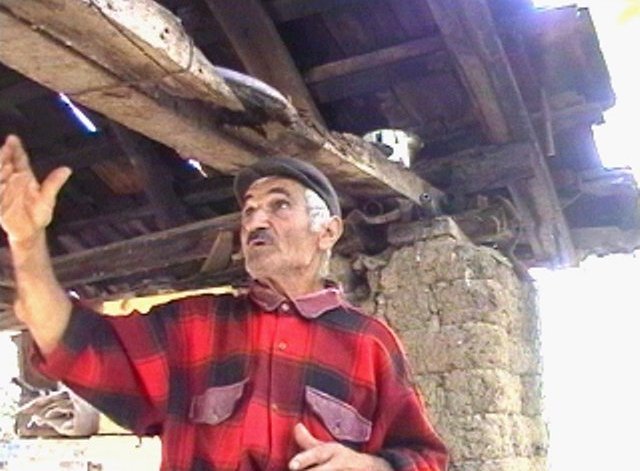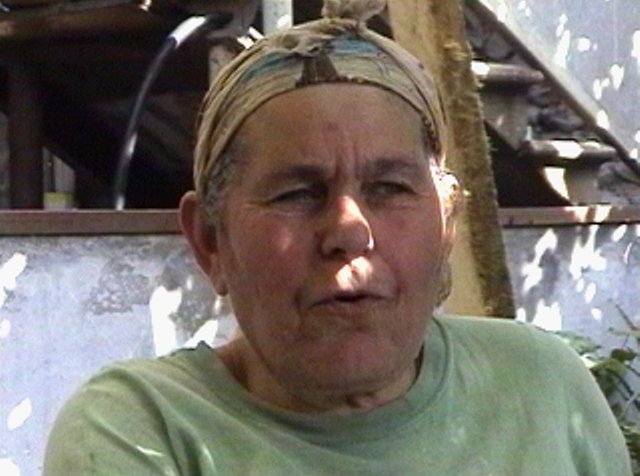
| ECLING | ეკლინგ | ECLING |
Bedrohte kaukasische Sprachen in Georgien
საფრთხეში მყოფი კავკასიური ენები საქართველოში
Endangered Caucasian Languages in Georgia
 |
|
 |
Udi უდიური ენა Udisch |
 |
უდიური ენა Udisch Udi |
Udi (the local designation is udin muz "Udi language") belongs to the Lezgian (or Southern) branch of the autochthonous East Caucasian language family. Within the Lezgian branch, Udi occupies a so-called marginal position reflecting the fact that historically speaking the language separated from the Lezgian "branch" soon after this branch disintegrated into at least three "dialects" (Early Udi, Early Archi, and Early Samur).
Today, Udi is spoken in three villages in Transcaucasia as well as in a number of diaspora places scattered throughout the Russian Federation, Armenia and Kazakhstan. The original habitat of the ethnic Udis in Northern Azerbaijan is now confined to the village of Nidzh (Nij), located on the road from Sheki (in the West) to Qabala (formerly Kutkashen) in the East. In Nidzh, the ethnic Udis represent a rather compact unity of roughly 4,500 people, 80% of whom reclaim to use Udi in one context or the other. Before autumn 1989, Vartashen (now Oghuz) was the second Azerbaijani village which hosted a significant number of ethnic Udis. By virtue of the Armenian Azerbaijani clashes in 1989, most of the roughly 3,000 Vartashen Udis were expelled. Some families fled to neighbouring Nidzh, others left Azerbaijan and settled in Armenia, the Russian Federation, or in Kazakhstan. Today, some 35 ethnic Udi families still live in Oghuz. A third settlement of ethnic Udis had been founded in Eastern Georgia (east of Kvareli) in 1922 when a considerable number of (basically) Vartashen Udis left their original habitat due to a disastrous economic situation. This village, called Okṭomberi (formerly Zinobiani), today hosts some 80 ethnic Udis (93 in 1989, 83 in 1995), living in a totally "Georgian" environment.
In total, there are up to 8,100 ethnic Udis today (7,971 Udis in Azerbaijan in 1989). Most of the Udi speakers are bi- or even multilingual. In Okṭomberi, it is Georgian which plays the role as the language for "external" communication, whereas Udi is retained by some 50 people in "internal" communication (most of them are 50 years old and beyond). In Nidzh, the language is much better preserved than in Georgia: Here, multilingualism based on Azeri and – until 1989 – on a local variety of Armenian forms an integrated part of everyday communication. Additionally, Southwest Iranian Tati (the language of the local Jewish communities) is occasionally present among ethnic Udis, too. Russian plays a much lesser role than in times of Soviet rulership. In Nidzh (and, until 1989, in Vartashen), Udi is spoken by most elder ethnic Udis (50 years and beyond), whereas the knowledge of the language decreases the younger people are. Yet, a considerable number of young Udis still use a (however strongly Azeri influenced) variety of Udi in "internal" communication which can be described as "Young People's Udi". The sociolinguistic situation of Udi in Nidzh has become more stable after the immigration of Udis from Vartashen. A modified (however informal) Cyrillic graphic tradition sporadically develops, opposing itself to the now Latin based tradition of Azeri. Yet, all teaching is in Azeri; no classes are given in Udi. The last years have seen a growing interest in the cultural and linguistic heritage of the Udi people due to an increasing debate on the ethnic layers in Azerbaijan. The Udi people is often thought to represent the last off-spring of the ethnic groups that constituted the Early Christian kingdom of Ałwan ("Caucasian Albania"). The foundation of the "Scientific Research center of Caucasian Albania" in Baku in the year 2000 which also opts to support the maintenance of the Udi cultural and linguistic tradition can be regarded as another expression of such a growing interest [though undoubtedly directed by political rather than purely cultural objectives].
The strong impact of the Azerbaijanian cultural and linguistic tradition has led to a dramatic decrease in the knowledge of the "mental" culture among Udis. Folk traditions are generally adopted from the Azeri surroundings though occasionally accommodated to the original Udi traditions. It still is a matter of research to disclose the extent to which specific Udi traditions with respect to folk tales, fairy tales, heroic or religious myths, and songs are still present among Udis. Most of the (scanty) data exploited in the scientific literature are older than at least 50 years. As a matter of fact, the large bulk of textual data on Udi stems from the 19th century.
The unique position of Udi within the Lezgian branch of East Caucasian has motivated linguists to work on this language for nearly 150 years now, starting with A. Schiefner's famous 1863 grammar. Though Udi has experienced a rather comprehensive linguistic description since then (including the exceptional work carried out by the Udi linguists Vorošil Łukasyan and Evgeni Jeiranišvili), the results can hardly be regarded as an overall contribution to the preservation and documentation of the language. Leaving aside the famous translation of the four gospels provided by the Bezhanov brothers in 1902, the stock of texts that are available to linguistic investigation has remained regrettably small even though Western linguists such as A. Harris (1992, 1997, 2000, in press) and W. Schulze (1982, 1994, 2001a, 2001b) have endeavoured to augment them in recent times. The same holds true for phonographic recordings the first of which (recorded in 1909 by A. Dirr) are stored in the Phonogrammarchiv of the Austrian Academy of Sciences (Vienna); the only recordings that have been published so far is three folk tales recorded by W. Schulze in 1984. The most urgent task of the present project thus consists in documenting both the actual conversational style and the general oral tradition with as many texts as possible and to accumulate the data in a new comprehensive Udi dictionary (Łukasyan's 1974 dictionary can be used as a starting point only).
| Zusätzliche Informationen | Additional information | დამატებითი ინფორმაცია |
| Im Hintergrund dargestellt ist das in einer armenischen Handschrift abgebildete "kaukasisch-albanische" Alphabet. | ||
| The background displays the so-called "Caucasian Albanian" alphabet contained in an Armenian manuscript. | ||
Copyright Jost Gippert / Manana Tandashvili Frankfurt 2003-2010. No parts of this document may be republished in any form without prior permission by the copyright holder. 24.1.2010.